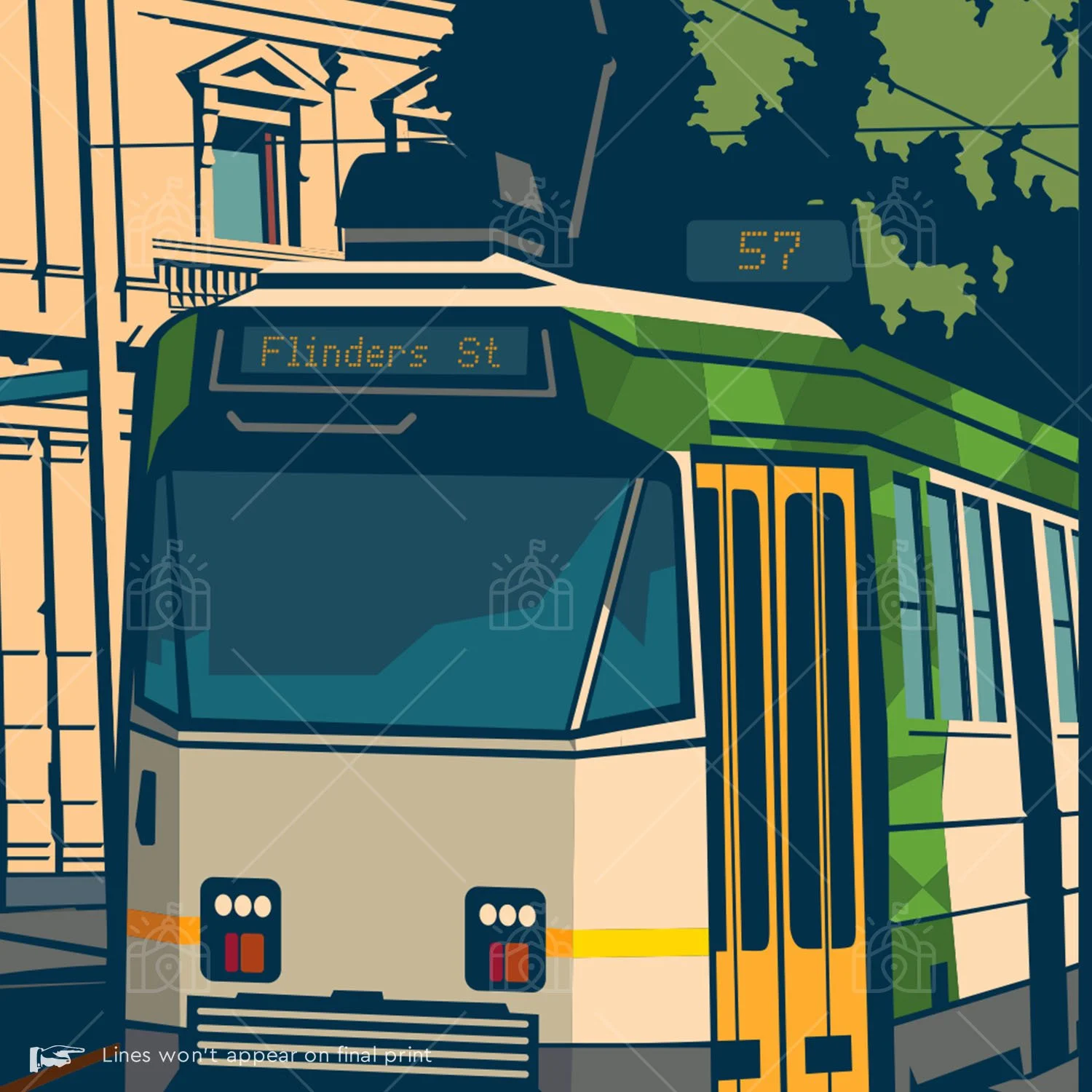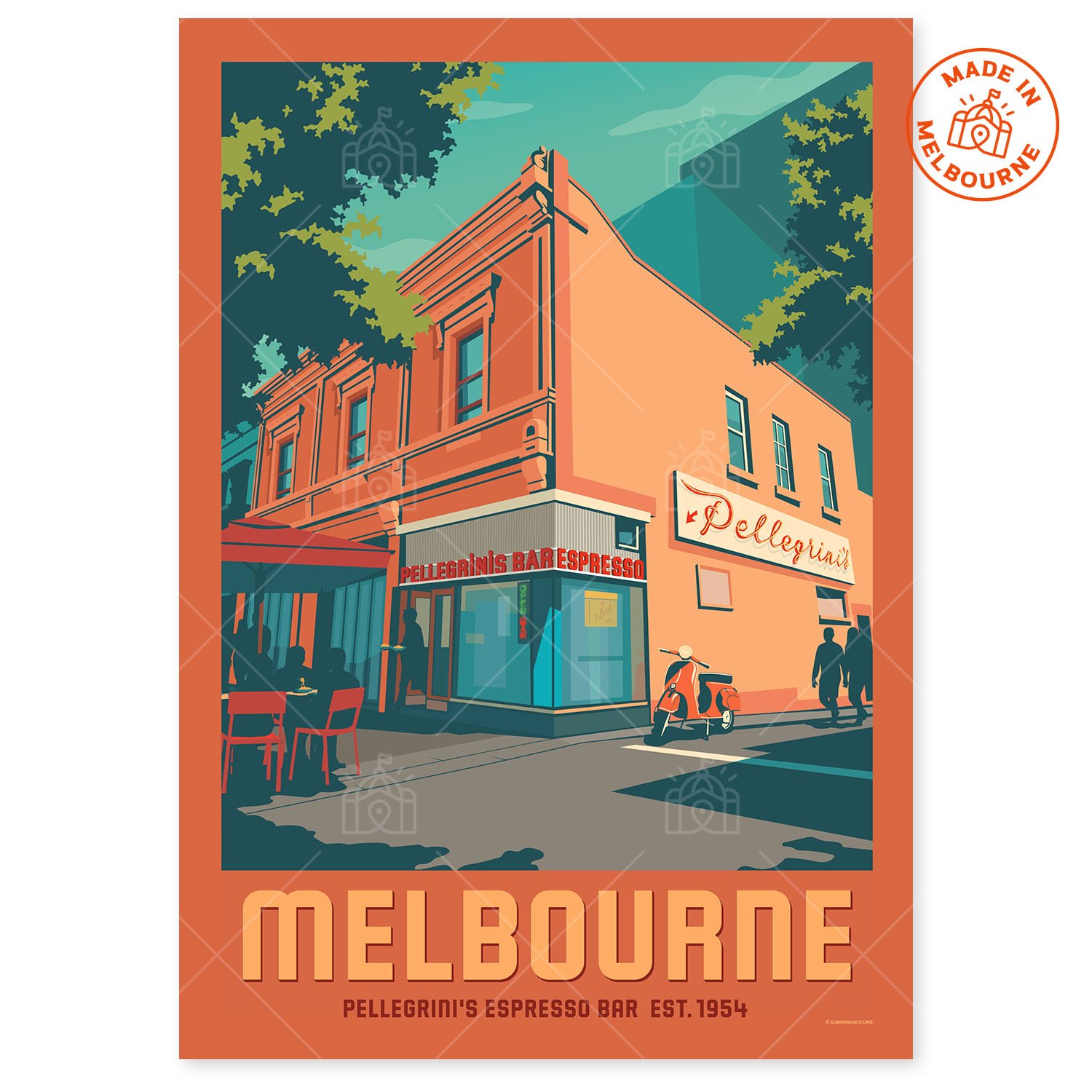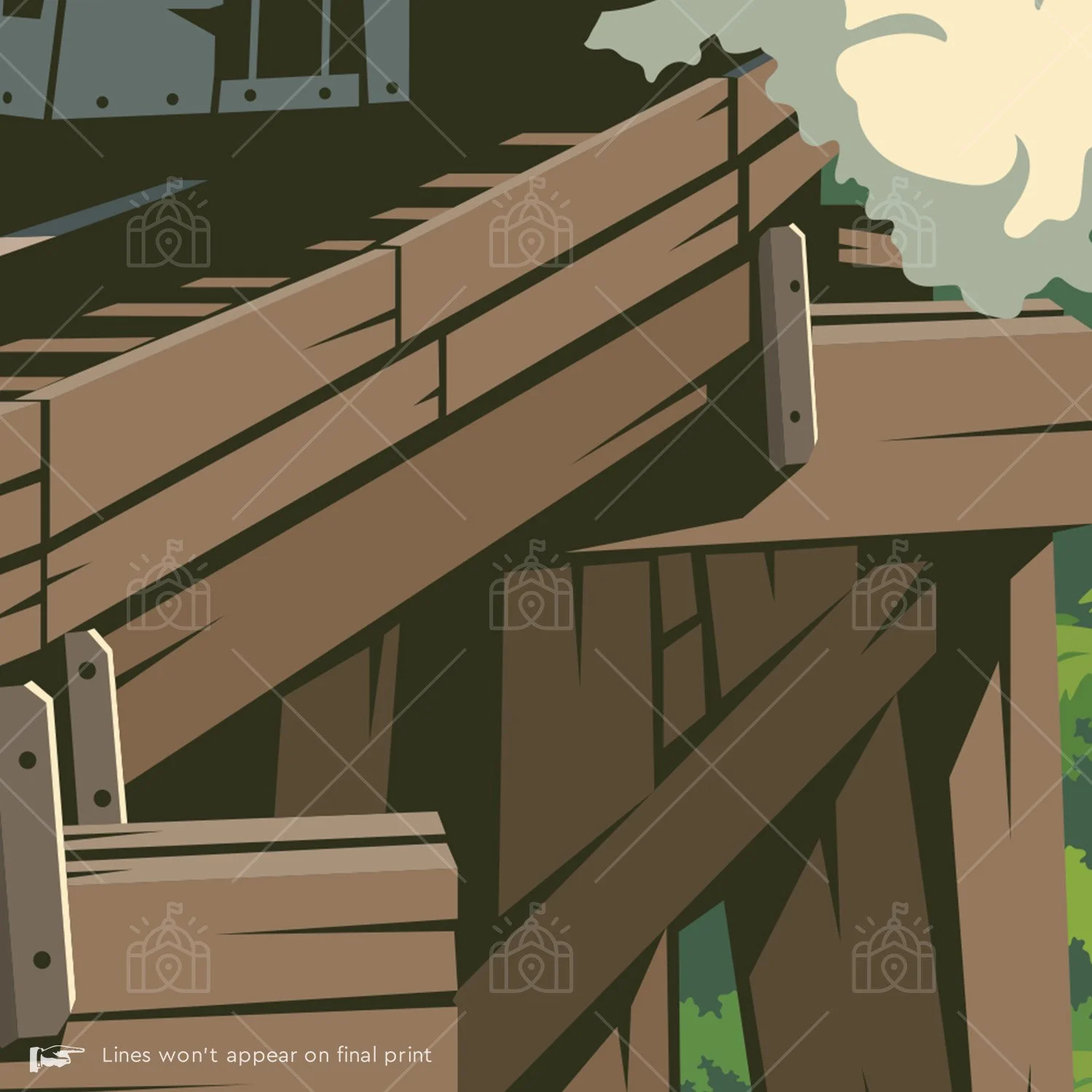






North Melbourne Town Hall and Tram Suburban Icon Poster
Towering over the streets like a beacon of Victorian-era pride, the North Melbourne Town Hall has stood watch over the suburb for nearly 150 years.
Built in 1876, back when the suburb was still known as Hotham — named after then-governor Sir Charles Hotham — the Town Hall was designed by prolific architect George Raymond Johnson, who also sketched out the plans for Fitzroy, Collingwood, and Northcote town halls, not to mention the iconic Meat Market just down the road.
From the start, the Town Hall became the heart of the borough, a place for speeches and soirées, council meetings and community dances, and more than a few heated debates about rates, roads, and representation. But by 1905, North Melbourne was reabsorbed into the City of Melbourne, and the hall’s days as a municipal HQ came to an end. No matter — the building stuck around, finding new life as a cultural space and eventually becoming the home of Arts House, where artists now stage bold ideas in place of budget proposals.
Today the Town Hall still looms over Queensberry and Errol Streets, a monument to a suburb that’s seen it all — gold rushes and housing crises, football glories and industrial decline, artist studios and refugee housing, culinary renaissance, and the ghosts of what came before.
This artwork is available in A0, A1, A2, A3, A4. Professional framing is available on A0, A1 and A2 sizes via pick up only.
Towering over the streets like a beacon of Victorian-era pride, the North Melbourne Town Hall has stood watch over the suburb for nearly 150 years.
Built in 1876, back when the suburb was still known as Hotham — named after then-governor Sir Charles Hotham — the Town Hall was designed by prolific architect George Raymond Johnson, who also sketched out the plans for Fitzroy, Collingwood, and Northcote town halls, not to mention the iconic Meat Market just down the road.
From the start, the Town Hall became the heart of the borough, a place for speeches and soirées, council meetings and community dances, and more than a few heated debates about rates, roads, and representation. But by 1905, North Melbourne was reabsorbed into the City of Melbourne, and the hall’s days as a municipal HQ came to an end. No matter — the building stuck around, finding new life as a cultural space and eventually becoming the home of Arts House, where artists now stage bold ideas in place of budget proposals.
Today the Town Hall still looms over Queensberry and Errol Streets, a monument to a suburb that’s seen it all — gold rushes and housing crises, football glories and industrial decline, artist studios and refugee housing, culinary renaissance, and the ghosts of what came before.
This artwork is available in A0, A1, A2, A3, A4. Professional framing is available on A0, A1 and A2 sizes via pick up only.
Towering over the streets like a beacon of Victorian-era pride, the North Melbourne Town Hall has stood watch over the suburb for nearly 150 years.
Built in 1876, back when the suburb was still known as Hotham — named after then-governor Sir Charles Hotham — the Town Hall was designed by prolific architect George Raymond Johnson, who also sketched out the plans for Fitzroy, Collingwood, and Northcote town halls, not to mention the iconic Meat Market just down the road.
From the start, the Town Hall became the heart of the borough, a place for speeches and soirées, council meetings and community dances, and more than a few heated debates about rates, roads, and representation. But by 1905, North Melbourne was reabsorbed into the City of Melbourne, and the hall’s days as a municipal HQ came to an end. No matter — the building stuck around, finding new life as a cultural space and eventually becoming the home of Arts House, where artists now stage bold ideas in place of budget proposals.
Today the Town Hall still looms over Queensberry and Errol Streets, a monument to a suburb that’s seen it all — gold rushes and housing crises, football glories and industrial decline, artist studios and refugee housing, culinary renaissance, and the ghosts of what came before.
This artwork is available in A0, A1, A2, A3, A4. Professional framing is available on A0, A1 and A2 sizes via pick up only.
© 2025 Historic Prints / Suburban Icons, part of The Brand Garage, Melbourne. All images and intellectual property remain the property of Historic Prints. No part of this artwork may be copied, reproduced, or distributed without prior permission.
























